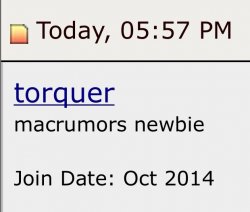As much as I appreciate being called a "newbie" because someone disagrees with me, I've been intimately involved in PC hardware as a profession and hobby since my first 386. I'd venture to say I know more about PC hardware than most and these days that's all a Mac is - PC hardware with a different OS (or not even that if you run Windows like I do).
You can be unhappy with Apple's hardware choices all you want, but trying to say hardware is or is not this or that when the facts don't agree with you is simply absurd. I realize Core i7 Quads have more cache, but you also have 2 more cores using that cache as it is shared. I also know that the dual core i7 has 4MB vs the i5's 3MB. Cache helps, to be sure, but its not enough to make the 2012 faster than the 2014 on an IPC and single threaded basis.
You don't have to take my word for it - go to PCPer, Toms Hardware, Anandtech, Tech Report, Notebookcheck, Bit-Tech, or whatever your favorite PC hardware review site is and look at the comparisons yourself. There have been a metric f-ton of reviews comparing IPC of Sandy Bridge, Ivy Bridge, and Haswell. You can see for yourself theres between 8-10% difference in sheer IPC alone per generation. So, clock for clock in a non thread limited atmosphere Haswell is faster than Ivy Bridge. It cannot be denied.
I don't get you guys. You can make a perfectly fine case for the 2012 Quad which is a great machine on its own and especially in multithreaded apps. You don't need to go denying reality or making crap up to justify your feeling. Just come out and say "hey, I need/want a quad core and it sucks that I can't have one in the new model." I certainly wouldn't hold it against you - that's a totally fair and accurate statement.
Whats crap is when you start making these weird extra claims that suggest you're either paranoid about Apple trying to screw you, or have such a tenuous grasp of hardware performance that you start claiming the new one is clock for clock slower, PCI-E SSDs are somehow worse, and the iGPU isn't much better.
Stick with the facts - there are use cases for each model where it makes sense. Neither is "all bad for everyone."
The "Newbie" comment was less an observation based on your deliberate focus on dual-core vs dual-core while side stepping the lack of a quad option in favour of dubiously beneficial single-thread performance and more to do with the fact you literally are a newbie. See attached.
As for your continual failure to understand why an external GPU that will never run anywhere near it's full speed and offers no external "solution", faster I/O and storage (as an paid for extra option) changes nothing when even the ludicrously over-priced 3Ghz model is still spanked on multi-threaded CPU performance and still offers poor value.
Your only argument in favour of the 2014 model is the mid-range one because at least it's £70 more than a previously £499 dual-core i5 with 4Gb and a 500Gb to get a faster dual-core with 8Gb and a 1Tb drive. Anything higher up the range is an utter waste of money.


